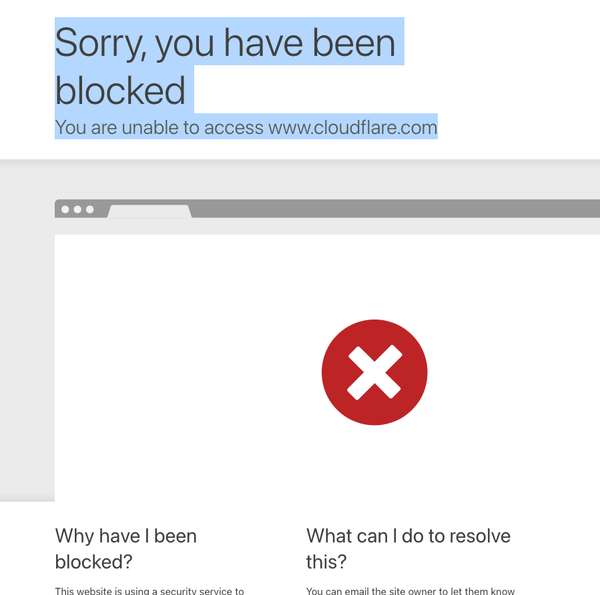2025's Top Open-Source IAM Picks: Secure Your Business Today - 12 Alternatives
Table of Content
Let’s be real—managing who can access what in a company isn’t just a chore; it’s a ticking time bomb if not handled properly. One wrong click, one unauthorized login, and suddenly you’re in a cybersecurity nightmare with legal consequences knocking at your door.
Enter Identity and Access Management (IAM) systems, the unsung heroes of enterprise security.
At its core, IAM does one job but does it exceptionally well: it ensures only the right people access the right things in your organization.
Think of it as the overqualified security guard who not only checks IDs but also tracks who’s doing what, where, and why. And in a world of increasing data breaches, having this kind of control isn’t a luxury—it’s a necessity.
Why Enterprises Swear by IAM Systems
- Better Security:
IAM is your enterprise’s answer to the question, “Who’s allowed in here?” Users only get access to what they need—no more, no less. It’s like locking each door with a unique key and throwing away the master key. The result? Unauthorized access becomes nearly impossible. - Legal Compliance:
Regulations like GDPR and HIPAA don’t just recommend precise data access control; they demand it. IAM tracks every action involving sensitive data, helping enterprises stay on the right side of the law. No more scrambling to explain “who did what” when auditors come calling. - Efficiency that Saves Time:
Setting up accounts, managing passwords, and disabling access when employees leave—it’s all tedious, error-prone, and downright boring. IAM systems automate these processes, cutting down on human error and saving precious IT hours. Bonus: Single sign-on (SSO) lets users access multiple systems with just one login. Yes, your IT team is silently cheering. - User-Friendly (For Once):
Remember the days of juggling 10 different passwords for 10 different systems? IAM systems throw that headache out the window. One login for everything. Forgot your password? No problem—self-service tools have your back. Even the least tech-savvy employee can manage. - Cost Reduction:
Password-related issues clogging your IT helpdesk? Security breaches draining your budget? IAM systems fix both. By reducing IT support tickets and preventing costly breaches, these solutions practically pay for themselves.
Why It Matters Now More Than Ever
With hybrid work becoming the norm and sensitive data sprawled across cloud services, controlling access has never been more critical. Enterprises that still rely on manual processes or outdated tools are playing a dangerous game. IAM systems aren’t just about security—they’re about peace of mind. And frankly, in today’s landscape, that’s priceless.
So, whether you’re running a small team or managing a global enterprise, investing in an IAM system isn’t just smart—it’s survival.
And if you’re still debating whether you need one, let me leave you with this: Can you confidently say you know who’s accessing your data right now? If not, it’s time to call in the gatekeepers.
IAM Systems for HR: The Secret Weapon You Didn’t Know You Needed
Let’s be honest—HR processes can get messy, fast. Onboarding new employees? Chaos. Managing department shifts? Double chaos. And don’t even get me started on offboarding, where one slip-up can mean a former employee still has access to sensitive company data.
It’s a logistical minefield, and if your company is still managing this manually, I’ve got news for you: it doesn’t have to be this hard.
Identity and Access Management (IAM) systems might not sound like the most exciting tool for HR, but they’re quietly revolutionizing how companies handle employee lifecycle management.
Think of IAM as the ultimate HR assistant—one that never forgets, never makes mistakes, and definitely doesn’t leave sticky notes all over the desk.
What IAM Does for HR, Onboarding, and Beyond
- Flawless Onboarding (No More Missed Steps):
New hire? No problem. IAM systems automatically provision accounts, assign the right level of access, and ensure the employee has everything they need from day one. No more frantic calls to IT because someone forgot to create their email account or grant access to critical tools. - Department Shifting, Simplified:
When employees move between departments, IAM systems adjust their access rights seamlessly. No manual requests, no delays, no accidental access to sensitive data they no longer need. It’s like the system just knows where they belong—and makes it happen without breaking a sweat. - Automated Offboarding (Finally!):
One of the biggest headaches in HR is making sure ex-employees don’t walk away with access to company systems. IAM shuts everything down in one smooth motion—email accounts, cloud services, file shares, you name it. The risk of lingering access? Gone. - Self-Service for Employees:
Need to reset your password? Update personal details? IAM empowers employees to handle these tasks themselves through self-service portals. This means fewer helpdesk tickets and happier employees who don’t have to wait for simple fixes. - Access Requests Made Easy:
IAM systems also streamline access requests for new tools or systems. Employees can request additional permissions through a formalized workflow, and managers can approve or deny them with a single click. No more emails bouncing around for weeks.
Why HR and IAM Make a Perfect Match
HR is all about managing people, and IAM is all about managing their access. Together, they create a system where employees can move through their roles, departments, and eventual departures without a single hiccup. It’s smoother, safer, and takes the guesswork out of everything from onboarding to offboarding.
So, if your HR department is still relying on spreadsheets, sticky notes, and crossed fingers to manage employee access, it’s time to level up. IAM systems aren’t just for IT—they’re for every department that values efficiency and security.
And trust me, once you try it, you’ll wonder how you ever survived without it.
The following list is our pick of the best open-source self-hosted IAM systems.
1- Hanko
Hanko is an open-source authentication and user management solution designed to eliminate passwords by supporting modern login methods like passkeys, social logins, and SAML SSO.
It offers flexible configuration options, allowing password-free or OAuth-only setups, and integrates easily with embeddable Hanko Elements for login and account management.
It offers an API-first, lightweight, and cloud-native design, It also provides a secure, customizable, and deployable solution for user authentication today.
Features
- Flexible Authentication Options: Choose from passwords, passcodes, or passkeys.
- Hanko Elements Web Components: Embeddable components for login, registration, and account management.
- OAuth SSO: Single Sign-On with providers like Apple, Google, GitHub, and more.
- Internationalization (i18n): Customizable translations for multilingual support.
- Email / Username Identifiers: Supports login with either email or username.
- SAML Enterprise SSO: SSO integration for enterprise environments via SAML.
- Webhooks: Triggers events for integration with other systems.
- Server-Side Sessions: Provides secure sessions with support for remote session revocation.
- Multi-Factor Authentication (MFA): Options include TOTP and security keys.
Upcoming Features
- Custom Social SSO Connections: Support for custom OIDC/OAuth2 connections.
- Privileged Sessions & Step-Up Authentication: Enhanced security with step-up authentication for sensitive actions.
2- Ory Kratos
Ory Kratos is a secure, developer-friendly identity, user management, and authentication system designed for modern cloud applications.
The solution provides end-to-end security, comprehensive user flows, and integrates seamlessly into cloud-native architectures. Scalable, API-first, and compliant, Ory Kratos supports user login, MFA, SSO, account management, and more.
Features
- Identity and Credential Management: Scales to billions of users and devices.
- User Flows: Self-service login, registration, and account management for passkeys, biometrics, SSO, and more.
- Authentication Protocols: OAuth2, OpenID, and multi-factor (MFA/2FA) including TOTP.
- Pre-Built UI Components: Ready-to-use login, registration, and account pages.
- Permissions System: Low-latency, role-based permission checks using Ory’s model.
- GDPR-Compliant Data Storage: Secure storage with data locality options.
- Admin Tools: Web-based console and CLI for identity management.
- Cloud-Native APIs: Compatible with Ory’s open-source servers.
- Account Verification: Ensures identity ownership via email, phone, or address.
- Account Recovery: Supports "Forgot Password" flows and MFA security codes.
3- ForgeRock OpenAM
ForgeRock offers a suite of open-source identity and access management solutions designed to handle authentication, authorization, identity synchronization, and session management.
It provides tools like OpenAM for access management, OpenIDM for identity management, OpenDJ for directory services, and OpenIG for identity gateway solutions. These projects are ideal for organizations seeking flexible, secure, and scalable identity systems.
Key Components:
- OpenAM: Access management, authentication, SSO, federation.
- OpenIDM: Identity synchronization and management.
- OpenDJ: Secure directory server with LDAP support.
- OpenIG: Identity gateway with session management.
Benefits:
- Enterprise-grade security and scalability.
- Flexible, open-source options.
- Easy integration with existing systems.
4- Casdoor
Casdoor is a user-friendly, open-source identity and access management (IAM) platform that makes it easy to handle secure sign-ins. It offers an intuitive web UI and supports a variety of protocols, including OAuth 2.0, OpenID Connect (OIDC), SAML, and more.
Casdoor’s flexible design integrates easily with existing systems, ensuring that organizations can set up single sign-on (SSO) and multi-factor authentication (MFA) with ease.
Its robust features make it a perfect fit for teams wanting a powerful, customizable IAM solution without sacrificing simplicity.
Features
- UI-First IAM & SSO Platform: Supports OAuth 2.0, OIDC, SAML, CAS, LDAP, WebAuthn, TOTP, RADIUS, and Kerberos.
- Seamless Frontend-Backend Separation: High concurrency with maneuverable web UI.
- Multi-Language Support: Internationalization-ready with i18n.
- Flexible Authentication: Direct sign-up, social and third-party logins, plugins for additional providers.
- Password Management: Forgot and reset password with secure verification.
- Broad Usage: Adopted by Fortune 500 companies and startups for easy identity management.
5- Gravitee.io
Gravitee.io AM aims to be a bridge between applications and identity providers to authenticate, authorize and getting information about user accounts.
- Access security: Control and secure enterprise data with industry standard protocols such as OpenID Connect and OAuth 2.0 and JWT.
- Single sign-on (SSO): Centralized and strong authentication for your customers using out-of-the-box or custom identity providers.
- Multi-factor authentication (MFA): Enforce security and convenience by adding extra authentication factors.
- Passwordless: Secure your apps and APIs with industry best-practice security using biometrics, tokens and further passwordless auth mechanisms.
- Identity providers marketplace: Connect your application with your user resources such as LDAP, Database, Webservices, Azure AD, Social, ... .
- Analytics dashboard: The out-of-the-box dashboards give you a 360-degree view of your applications and users. You can also use all metrics with external tools like Grafana or Kibana.
- Plugins system: Specialize platform behavior to exactly fit your needs.
6- CasGate
CasGate is a fork of Casdoor the open-source IDM system. While this fork is currently fully compatible with the original Casdoor, it's essential to note that future features may diverge from the main project.
7- Authing
Authing is a cloud-based Identity as a Service (IDaaS) platform that simplifies authentication and user management for applications, providing secure identity infrastructure for customer (CIAM) and enterprise (EIAM) needs.
It supports seamless, cross-platform logins and enhances IT security by enabling identity sharing across SaaS applications and user ecosystems.
Designed to protect businesses while improving user experience, Authing is trusted by enterprises and developers for secure, scalable access management.
Feature
- API-First Architecture: Modular identity functions via SDKs and APIs.
- High Security: Multi-factor login, encryption, compliance.
- WeChat Integration: Simplified login across WeChat ecosystem.
- Performance: Millisecond queries, redundant setup.
- Productivity Tools: RESTful, GraphQL, customizable login.
- Custom & Private Deployment: Full support, 24/7 customer service.
- Universal Login Components: Supports social logins, MFA, and more.
8- Keycloak
Keycloak is a powerful open-source identity and access management (IAM) solution designed to simplify authentication for modern applications. Built to handle single sign-on (SSO), identity brokering, and user federation, Keycloak ensures robust security and user convenience across web apps, mobile apps, and APIs.
With Keycloak, developers can enable features like user login, account management, and access control with minimal effort. It supports standard protocols like OAuth2, OpenID Connect, and SAML, making it compatible with a wide range of platforms. Keycloak’s intuitive admin console allows for easy configuration, while its robust APIs empower developers to customize the experience.
What sets Keycloak apart is its flexibility. Whether integrating with existing LDAP directories, social login providers, or external identity brokers, Keycloak seamlessly adapts to your needs. It also comes with built-in support for password policies, two-factor authentication, and user sessions monitoring.
Deployed on-premise or in the cloud, Keycloak provides a scalable solution for small startups and large enterprises alike. Its active community and detailed documentation ensure smooth onboarding for new users.
For anyone looking to secure their applications without building IAM features from scratch, Keycloak is a game-changer. Dive into its GitHub or explore more at Keycloak.org.
11- Aerobase
Aerobase is an open-source identity and access management platform tailored for secure, seamless user authentication. Built with robust features like single sign-on (SSO), user federation, and social login integration, it’s ideal for modern applications.
Supporting OAuth2, OpenID Connect, and SAML protocols, Aerobase ensures compatibility across systems. Explore its capabilities on GitHub for secure, scalable solutions.
12- IAM Zero
IAM Zero is an open-source tool designed to help developers manage AWS IAM permissions efficiently. It proactively detects over-permissioned roles, recommends least-privilege policies, and reduces security risks. Perfect for teams adopting DevSecOps practices, it ensures your cloud environment remains secure and compliant.
Key Features:
- Automated detection of over-permissioned IAM roles.
- Suggestions for least-privilege policies.
- Easy integration into CI/CD pipelines.
- Supports developer-first workflows.
- Lightweight and open-source.
Wrapping up
Choosing the right Identity and Access Management (IAM) solution is a critical step for securing your enterprise while maintaining efficiency. Open-source IAM tools not only provide robust features but also allow unparalleled customization and transparency compared to proprietary solutions. Whether you’re looking for scalable authentication, seamless SSO, or granular access control, there’s an open-source option that fits your needs.
Explore these tools, test them against your requirements, and leverage their communities for support and growth. Open-source IAM solutions empower enterprises to stay secure, flexible, and ahead in the ever-evolving digital landscape.











